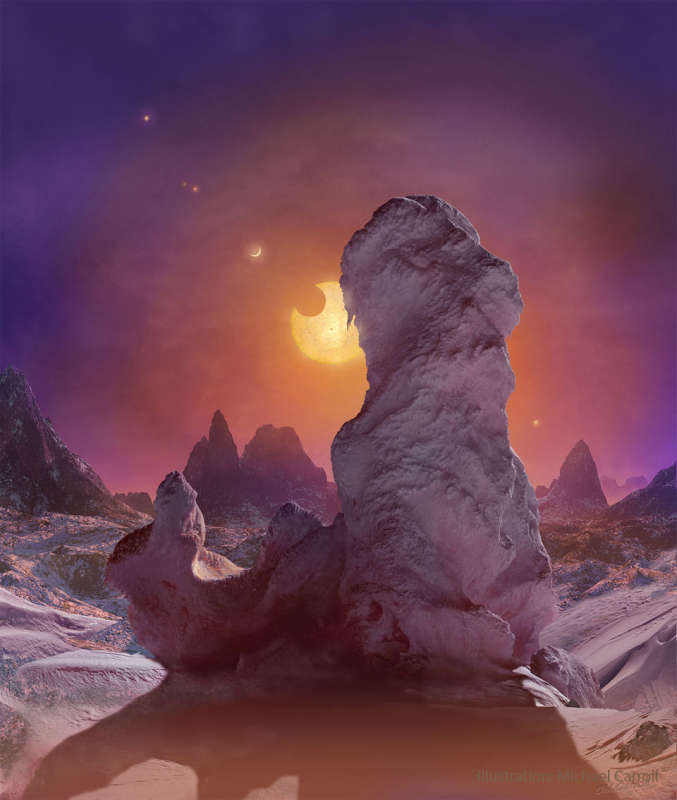
|
Credit & Copyright: Michael Carroll
Explanation:
Seven worlds orbit the ultracool dwarf star TRAPPIST-1.
A mere 40
light-years away, many of the exoplanets were discovered in 2016
using the
Transiting Planets and Planetesimals
Small Telescope (TRAPPIST) located in the
Atlas Mountains of
Morocco,
and later confirmed with telescope including NASA's
Spitzer Space Telescope.
The
TRAPPIST-1
planets are likely all rocky and
similar in size to Earth, and so compose one of the largest
treasure
troves of terrestrial planets ever detected around
a single star.
Because they orbit very close to their faint, tiny star
they could also have regions where surface temperatures
allow for the presence
of ice or even liquid water, a key ingredient for
life.
Their
tantalizing proximity to Earth makes them
prime candidates for future
telescopic explorations of the atmospheres of
potentially habitable planets.
All seven exoplanets appear in
the featured illustration, which imagines a view from the most
distant known world of this system,
TRAPPIST-1h,
as having a rocky landscape covered in ice.
Meanwhile, in the imagined background, one of the
system's inner planets crosses in front of
the dim, orange, nearly
Jupiter-sized parent star.
Astrophysicists:
Browse 3,000+ codes in the Astrophysics Source Code Library
|
January February March April May June July August September October November December |
| ||||||||||||||||||||||||||||||||||||||||||||||||
NASA Web Site Statements, Warnings, and Disclaimers
NASA Official: Jay Norris. Specific rights apply.
A service of: LHEA at NASA / GSFC
& Michigan Tech. U.
Based on Astronomy Picture
Of the Day
Publications with keywords: extrasolar planet
Publications with words: extrasolar planet
See also:
- APOD: 2025 September 8 Á IRAS 04302: Butterfly Disk Planet Formation
- APOD: 2024 July 8 Á Exoplanet Zoo: Other Stars
- Temperatures on Exoplanet WASP 43b
- Epsilon Tauri: Star with Planet
- APOD: 2023 October 17 Á PDS 70: Disk, Planets, and Moons
- APOD: 2023 September 20 Á Methane Discovered on Distant Exoplanet
- APOD: 2023 June 6 Á Star Eats Planet
